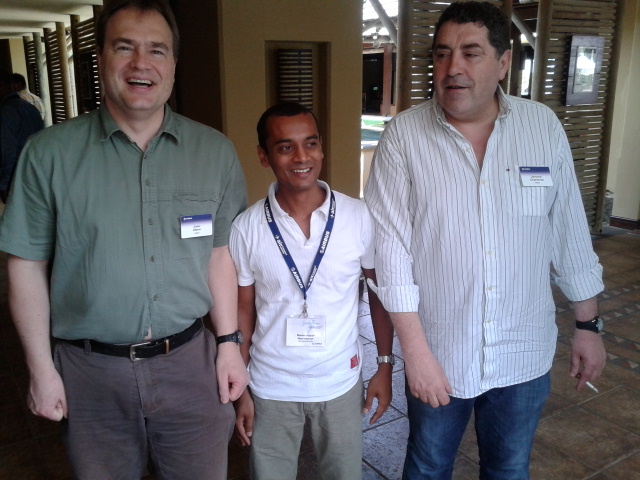When we meet with senior aviation executives (non-airline), we often get asked two questions:
- How can social media work in a B2B context?
- Can we really sell a plane (or an engine, or a wing or a blade…) by leveraging Facebook or Twitter etc?
To this question, we share case studies from Intuit, Ford and more. But we’ll no longer be doing that – because we finally have one case study from aviation itself, and what a story it is!
The back-story
As you might have learnt from our Twitter feed, SimpliFlying was recently invited to Toulouse, to address Airbus executives and senior management, sharing with them the latest trends in airline marketing and the rise of the connected traveller.
In the audience were also senior members of the Airbus sales team, who actively participated in the 40 min Q&A that followed my presentation. While we had a very good discussion, what I did not anticipate was how creatively the insights would be applied in the field!
I happened to meet the sales team once again last week, and they shared a story with me that I found to be a very innovative application of the new insights they had gained in Toulouse. I’m sharing the story here with their permission.
Stuck in the middle
In a meeting with VP of Fleet Management for an airline, the salesman and his team wanted to emphasize the importance of comfort on long haul flight. It boils down to differentiating with competition, by recommending a 3-3-3, nine abreast seating configuration.
The logic is that since most airlines don’t always fly full-capacity, there are bound to be empty seats. Airlines can then leave the middle seat empty, hence ensuring more comfort, because few people will be stuck in the middle on a long haul flight.
Bring in The Connected Traveller
To demonstrate his point to the VP, he takes three chairs and asks the poor assistant to sit in the middle, with not so much space to sit between the salesman and the VP, because they are slightly “heavy”.
The salesman asks, “How do you feel sitting like this on a 14 hour flight”?
Assistant says, “Not so good”.
He then asks, “How many friends do you have on Facebook?”, he answers “1000”.The salesman then leads him into saying the first thing he does after a flight is to whip our his phone, to update his Facebook status, and won’t be telling that he had a good airline experience.
Then, salesman suggests, “What if just three unhappy people on the flight share their unhappiness on Facebook? And between the three of them, that’s 3000 potential customers who know that your airline is not good. That’s 10 times the number of passengers on the plane who may never buy a ticket!”
(VP Fleet management gulps)
The salesman successfully brought home the realities of the connected traveller, and that may just help him to sell some planes!
Creative application!
I have to admit that this is by far one of the most creative applications of social media concepts I’ve come across. The connected traveller is a reality today – he/she is always connected, shares instantly and has an opinion on almost every aspect of his/her travel experience.
The VP of fleet management is not on Facebook. The salesman who led this creative campaign is himself not on Facebook. Only that assistant is. And that’s all that matters.
The management of airlines and airports needs to understand the behaviour of today’s travellers and cater to their needs. Otherwise, they will one day discover that they have been living in the dinosaur era while the world has moved on. You’ve got to be where your customers are. And you’ve got to speak to them in a language they understand. And that’s all that matters.
As for the Airbus sales team, I wish them all the best, and if they do clinch this deal, I’ll keep the world updated! Because that will be one hell of a return on investment!


